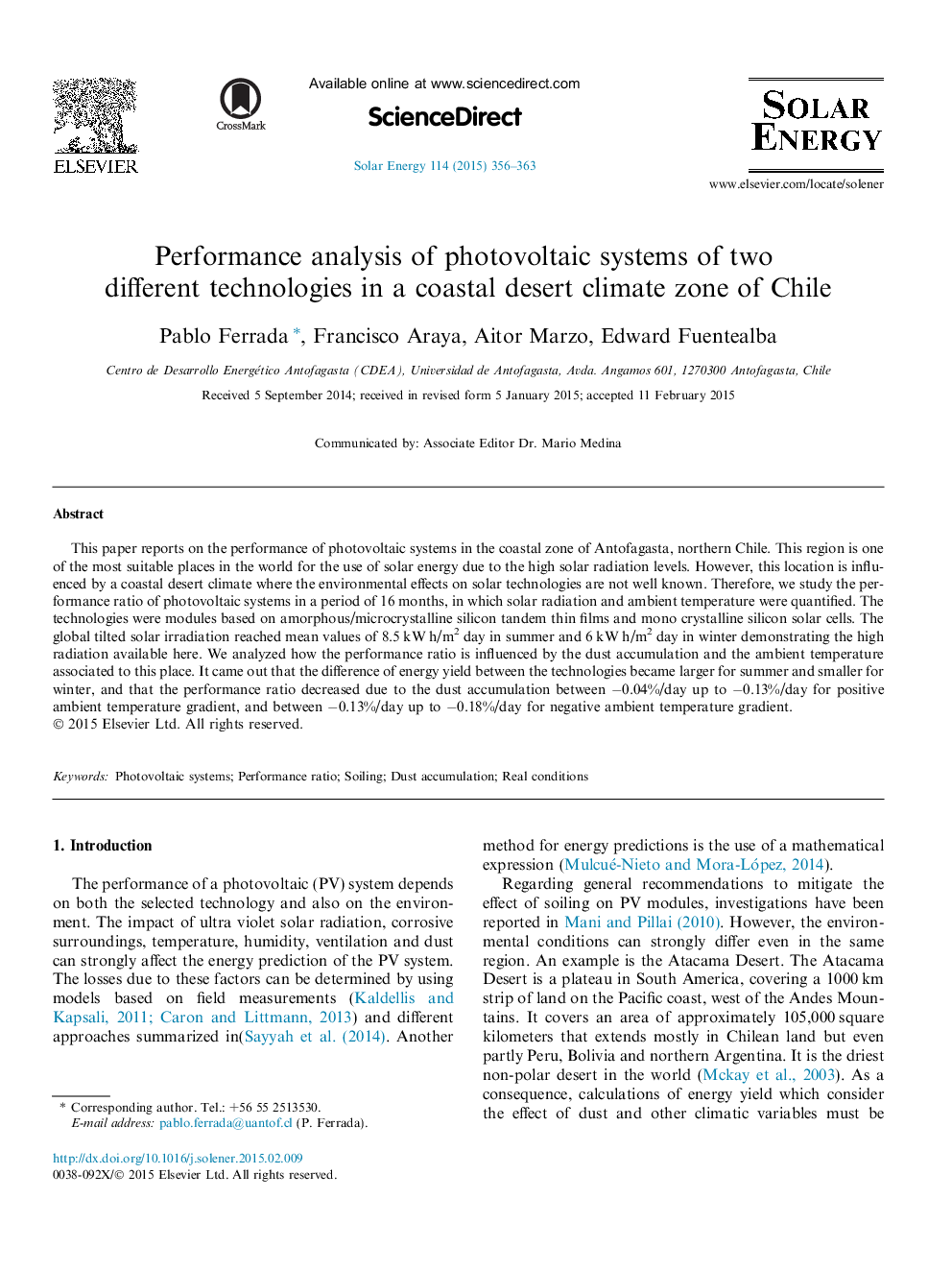| Article ID | Journal | Published Year | Pages | File Type |
|---|---|---|---|---|
| 7938051 | Solar Energy | 2015 | 8 Pages |
Abstract
This paper reports on the performance of photovoltaic systems in the coastal zone of Antofagasta, northern Chile. This region is one of the most suitable places in the world for the use of solar energy due to the high solar radiation levels. However, this location is influenced by a coastal desert climate where the environmental effects on solar technologies are not well known. Therefore, we study the performance ratio of photovoltaic systems in a period of 16Â months, in which solar radiation and ambient temperature were quantified. The technologies were modules based on amorphous/microcrystalline silicon tandem thin films and mono crystalline silicon solar cells. The global tilted solar irradiation reached mean values of 8.5Â kWÂ h/m2Â day in summer and 6Â kWÂ h/m2Â day in winter demonstrating the high radiation available here. We analyzed how the performance ratio is influenced by the dust accumulation and the ambient temperature associated to this place. It came out that the difference of energy yield between the technologies became larger for summer and smaller for winter, and that the performance ratio decreased due to the dust accumulation between â0.04%/day up to â0.13%/day for positive ambient temperature gradient, and between â0.13%/day up to â0.18%/day for negative ambient temperature gradient.
Related Topics
Physical Sciences and Engineering
Energy
Renewable Energy, Sustainability and the Environment
Authors
Pablo Ferrada, Francisco Araya, Aitor Marzo, Edward Fuentealba,
